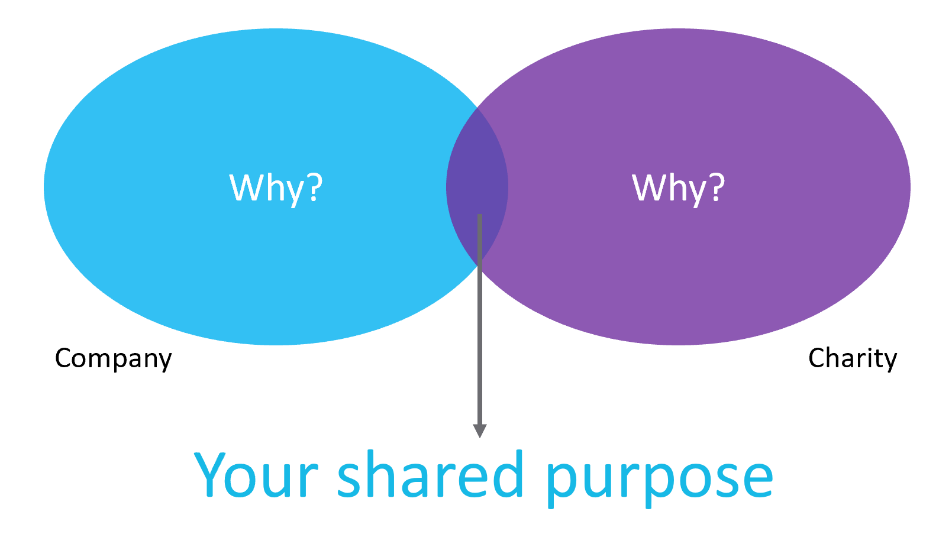The coronavirus outbreak is likely to be the most challenging event any of us have dealt with in our working lives. We’re adjusting to a “new normal” so new tools are required. As such, we’ve put together this list of 5 essential tools for corporate partnerships success in the coming months.
1. A list of inspiring and innovative examples
The most important barrier to overcome is fear. We find ourselves listening to our anxiety – wondering if we should even be making approaches right now, let alone thinking about how. Our suggestion to overcome this barrier is to compile a list of current examples that inspire you. There are plenty of partnerships being shouted about in the media right now – save these news articles to keep you inspired. Three of our favourite examples are…
- Morrisons, CLIC Sargent and Marie Curie – Morrison’s, the mega-retailer, have taken on over 500 staff from CLIC Sargent and Marie Curie shops to support vulnerable customers.
- Psychopomp and Bristol Royal Hospital for Children – Psychopomp are a Bristol based gin distillery, who used their alcohol to make hand sanitizer and donated the proceeds to the children’s hospital.
- Scottish Gas and Children’s Hospices Across Scotland (CHAS) – a relatively new partnership, Scottish Gas pivoted their approach to donate mass personal protective equipment to CHAS’ frontline staff to keep their workers safe during the outbreak.
2. A narrative on how your cause links to the coronavirus
If your messaging doesn’t have some link to the pandemic, it might feel irrelevant. You need to have information about how the coronavirus is impacting your beneficiaries and what it means for your services. This will help renew your sense of urgency when approaching prospects and partners and ensure that you are as compelling as possible when you do speak to them.
This will also give you a sense of the kinds of strategic partnerships that would be of most use, right now – for example, it might be a technology company that can help set up digital services or people who produce a particular type of equipment you need right now.
3. Target list of prospects and partners that share your purpose
The strongest partnership approaches are based on shared purpose. Focus on why you do what you do, and why companies do what they do. This may be listed in their ‘about us’ or their ‘mission’ on their website. Identify companies that overlap with you, then generate ideas from that overlap. We recommend showing it as follows:

Laying out your stated purposes in this format can often help your brains engage. Going through this process should help you identify your list of 10-12 companies to approach – some of them may be existing partners.
4. Short, punchy email
If you don’t have a phone number, we recommend that you take advantage of the fact that your target prospects have never spent so much time in front of their computers. So send them a short punchy email including the following key elements:
- Acknowledge that they are wrestling with the coronavirus crisis
- State your shared purpose (make sure it is inspiring)
- Tell them you have an exciting idea that you believe is perfect for their company especially during this challenging time, so could you have just 30 minutes on the phone to share it
This should give you a good chance of securing a pitch meeting. We’ve seen this work incredibly well for our charity clients – one of whom got a response 30 minutes after their initial email, suggesting a phone call the next day!
5. Virtual partnership activity
So much of our traditional partnership activity relies on people coming together, but that’s not possible right now. We recommend you arrange a call with some of your colleagues and brainstorm ideas for virtual partnership activity. This could include digital marketing campaigns, online cause-marketing promotions or fundraising ideas that employees can do in their own homes. Whatever ideas you come up with, make them simple, unique and interesting.


Leave a comment